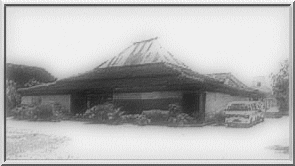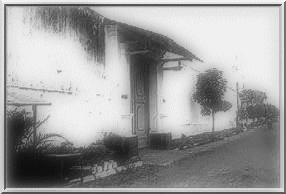LOCATED in the neighbourhood of Dalem Kratonan, Baluwarti, this is the largest dalem (royal prince house) –9000 square metres, with the tallest fence in the neighbourhood. It was built by Paku Buwana IV at the same time as he built Dalem Suryahamijayan and Dalem Sasanamulya.
_____________________________________________________________________
As they finished Dalem Poerwadiningratan, Sinuhun Paku Buwana IV held a Lenggah Siniwaka (royal-governmental meeting attended by his ministers) in that building.
_____________________________________________________________________
©
This royal house was in turn given to Kanjeng Ratu Pembayun (the eldest princess) who was married to KGPH Mangkubumi II, and then inherited by KPH Riya Atmaja. One of his children who had the right to inherit the house was Kanjeng Mas Haryo Purwodiningrat Sepuh who in turn gave it to his son, Kanjeng Raden Mas Tumenggung Haryo Purwodiningrat.
Therefore, the neighbourhood is called Purwodiningratan. (According to Javanese tradition, royal houses are named after the last owner of the building). The present Dalem Poerwadiningratan is owned by the Poerwadiningrat family.
_____________________________________________________________________
In Java, a house is considered to be a reflection of its owner. The great image of a house would eventually diminish or vanish after its owner died.
_____________________________________________________________________
©
Kanjeng Raden Mas Tumenggung Harya Poerwadiningrat was one of the Bupati (noblemen of high office) of the Kasunanan Surakarta Kingdom. He was once in charge of Sriwedari, the royal menagerie. His great influence could be seen from the was people treated his house.This influence seemed to diminish after his death, the building receiving relatively disrespectul treatment now. At the moment, many kinds of vehicle pass in front of it and eople frequently enter the pendapa without removing footwear.
When KRTH Poerwadiningrat was still alive, visitors would get off their vehicles and enter the neighbourhood on foot. They would even crouch down to move in the pendapa to show their respect. They put sand on the yard as the servants would sit on it when they had to talk with him. It also had a special place to keep the visitors’ parasols. As they began to use it as the regional office of the Department of Agriculture and Justice in 1947, these respectful habits disappeared. Dalem Poerwadiningratan was also used as an SMP (first secondary school), SMA (second secondary school), and SGA (School for Religion Teacher) by Tjokroaminoto Educational Foundation around 1950 – 1960.
Like any other traditional Javanese buildings, Dalem Poerwadiningratan also has pavilions surrounding it. The Poerwadiningrat family live in those pavilions. Paku Buwana X once said, “Budaya Jawa iku ora beda karo pusaka kedhatone. Lamun dipepetri bakal hamberkahi, nanging lamun sinia-sia bakal tuwuh haladipun.” It means, “Javanese traditions are like the royal mystical weapons. If you take care of them, they will make your life easier, but if you abandon them, they will make your life difficult.” For this reason, on every Thursday night, they put special offerings at dalem pringgitan. The same is done on first day of every Javanese month and on the first day of Sapar (the second month of the Javanese calendar) to commemorate the foundation of the building. As in most old traditional Javanese buildings, there were frequently mysterious happenings in this building, especially when they forgot to leave offering at the pendapa.

